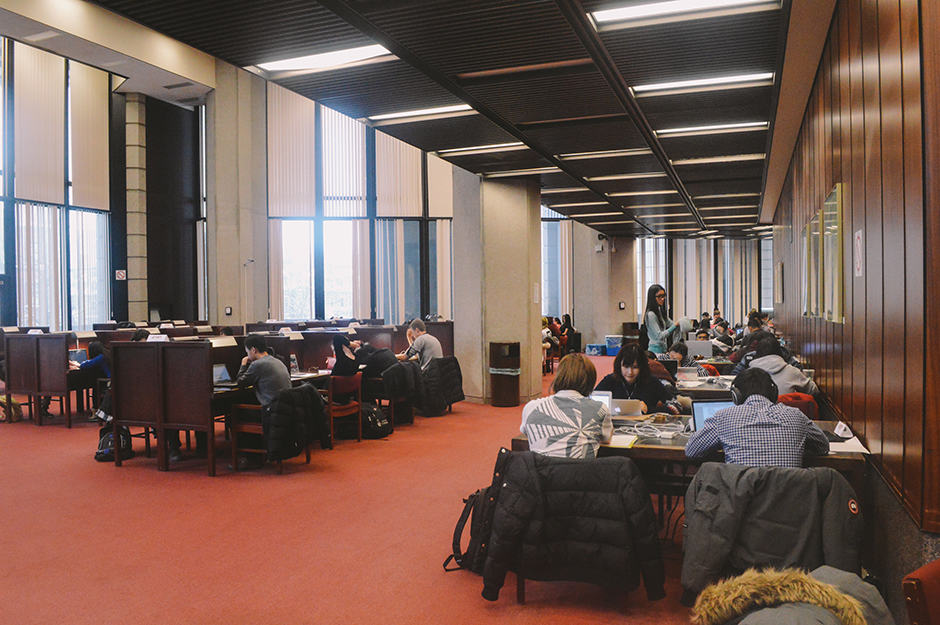The University of Toronto’s big bird is about to get bigger.
Robarts Library currently welcomes around 18,000 visitors a day, a figure that has doubled over the past 35 years. As enrollment at U of T has increased, the demand for more work stations in libraries has also done so.
Melissa Clancey, a fourth-year political science and English major, says that she has “a love/hate relationship with Robarts.”
“[I] always end up there… but I hate circling an entire floor for a seat,” she says.
The Robarts Common project should go some way towards alleviating this problem, providing 1,222 study spaces for a grand total of 6,027 at the library.
The study spaces will be housed inside a new, state-of-the-art five-storey glass pavilion.
In addition to these new work and study spaces, the extension will also bring a new student lounge, more group study areas, and an outdoor plaza and park.
According to Larry Alford, chief librarian at the U of T, the main reason behind the extension is the need for more study space.
Alford says that he has spoken to numerous students over the past three or so years, many of whom have talked about the need for more study spaces on campus.
Alford adds that Robarts Common will be connected to Robarts Library via bridges, granting students easy access to the stacks, the cafeteria, and other amenities that the current building offers.
Mercedes Fogarassy, a second-year peace, conflict and justice student, praised the expansion, saying that the university needs more study space to accommodate students. “[U]ltimately, we are at the university to learn, and there is no better place on campus to focus and study than at the centre of information,” she says.
The first phase of the project is already complete, consisting of numerous improvements to study spaces and library infrastructure.
The second phase will consist of the construction of the new five-storey addition, called Robarts Common.
According to Alford, Robarts Common will stay in line with the university’s environmental initiatives. The new structure will be granted a silver rating by the Standards of Leadership in Energy and Environmental Design because of its planned environmentally-friendly features, including a green roof area, efficient landscaping, and the use of regionally sourced or recycled materials.
Although not yet confirmed, Alford hopes that construction on the addition will be underway in January, 2016.


